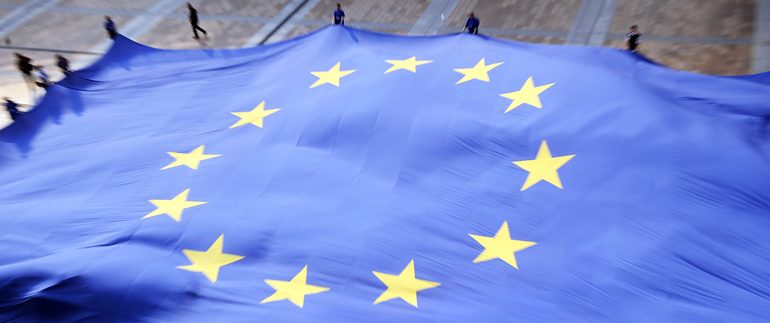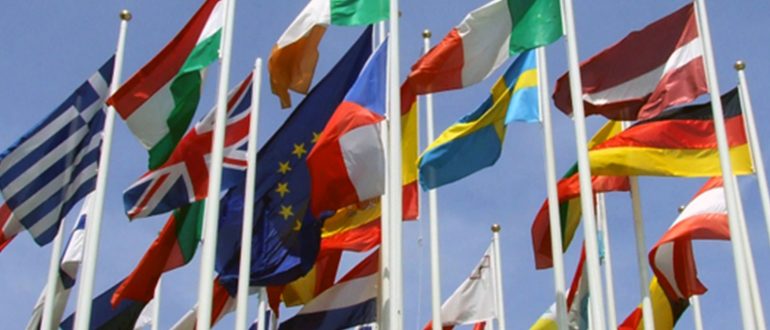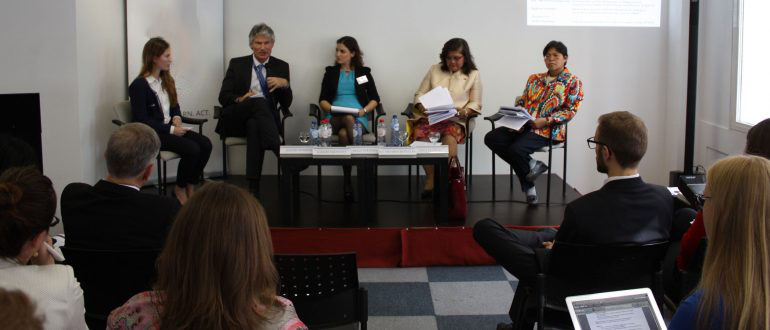Burma’s Transformation? Give ASEAN Some Credit
ASEAN’s stance towards Burma has often been criticized for being too soft. It’s true that the organizations policy options towards the country were restricted. But without the organization’s approach of continuous engagement, the change we are now witnessing might not have been possible.
1. Introduction
When Burma’s[1] new constitution was adopted in a controversial referendum in 2008, few were optimistic about the chances of democratic transition in the country that was, at that time, a quasi-pariah. The privileges granted to the military seemed to be too extensive to allow for far-reaching reforms. Over the last months however, democratization became more and more real. President Thein Sein’s government has released political prisoners and partly lifted media restrictions. And in April this year the world watched as Aung San Suu Kyi, who had spent 15 years of her life under house arrest, led the oppositional National League for Democracy (NLD) to a landslide victory in the parliamentary by-elections.
While much remains to be done, these events indicate that after half a century of military rule, Myanmar seems to be on the right track. A great deal of the reform agenda of the junta’s supreme executive body, the State Peace and Development Council (SPDC), has been attributed to the impact of economic sanctions and political isolation by the West. By contrast, the Association of Southeast Asian Nations (ASEAN), of which Myanmar is a member, has often been criticized for taking too soft a stance with the regime, thus encouraging it to continue its often brutal handling of political opposition and put off reforms.
As I argue in this contribution, these accounts are not entirely fair. In fact, ASEAN has to be given credit for substantially contributing to a political climate that is favorable of Burmese democratization. In particular, three elements of ASEAN’s Burma policy proved to be more effective than is usually acknowledged: the concept of constructive engagement, moderate diplomatic pressure and criticism, and the creation of institutional incentives to policy change.
2. Geo-strategy, norms, and divergent policy preferences – parameters of ASEAN’s Burma Policy
It has to be emphasized that the prospect of democratization was not the number one rationale behind ASEAN’s inclusion of Myanmar in 1997. Rather, it was economic and, even more important, geo-strategic considerations that convinced ASEAN leaders of the need to incorporate the country. The growing ties between China and the military leadership in Yangon[2] were perceived as a strategic threat by the leaders of the other Southeast Asian nations. Burma’s accession to ASEAN was supposed to balance this relationship with China. This strategic background provides the first parameter of ASEAN’s Burma policy: To avoid driving Burma into China’s arms or alienating Burma’s powerful northern ally, ASEAN has needed to refrain from excessive criticism of the regime.
The second factor informing ASEAN’s Burma policy is the organization’s normative framework. The so-called ASEAN Way emphasizes consensual decision-making, non-confrontational behavior and non-interference of the member states in each other’s internal affairs. In practice, the interpretation of these norms was never absolute when it came to dealing with Burma. Still, the ASEAN Way has limited the other ASEAN states’ possibilities to influence the country’s policies, making it extremely difficult to openly discuss internal developments in Burma, let alone to take collective measures in response. On the other hand, by sticking to these norms ASEAN was able to create a constructive environment for negotiations with Burma, emphasizing engagement and trust building over isolation and confrontation.
These restraints are increased by the third factor affecting ASEAN’s options with respect to Burma: the divergent policy preferences of its member states. The five founding members – Indonesia, Malaysia, the Philippines, Singapore and Thailand – have in the past been taken a relatively critical posture towards the regime so as to prevent the issue from damaging the organization’s image in the international community. In contrast, the Indochina states of Cambodia, Laos and Vietnam, in fear of sooner or later becoming the subject of criticism themselves, have advocated a much more appeasing approach, invoking the principle of non-interference. With this heterogeneity of interests, it was quite hard for ASEAN to develop a coherent policy towards Myanmar.
2. Central elements of ASEAN’S Burma policy
As a consequence of these influences, ASEAN’s Burma policy since the country’s accession has been characterized by three elements:
First, the concept of constructive engagement favors political dialogue over confrontational and coercive measures such as diplomatic isolation, economic sanctions and military intervention. Even in the face of severe violations of human rights during the Depayin massacre in 2003 and the bloody repression of the so-called Saffron Revolution of 2007, ASEAN leaders have repeatedly renounced sanctions as a means to pressurize the junta. Similarly, the suspension of Burmese membership in ASEAN was never a serious alternative for the other states. Instead, they tried to engage the regime in a dialogue over democratic reforms. The seven-point Roadmap to Democracy, presented by the Burmese military government SPDC[3] in 2003, served as a benchmark for these discussions. The ASEAN states accepted the military’s role in the transformation process and rejected prospects of sudden regime change, thus reassuring the military leadership that their mere existence was not at stake.
It’s true that in 2005, Burma was strongly urged by the other member states to abstain from the ASEAN chairmanship it would routinely have taken over the next year. But this pressure was not so much a sign of ASEAN voluntarily breaking with its constructive approach. Rather, it was the result of the EU and the U.S. making clear that their relations with ASEAN would severely be damaged if ASEAN didn’t toughen its stance on the regime.
Second, while reaffirming the principles of the ASEAN Way, officials of the other member states have increasingly used diplomatic pressure and criticism to influence the political situation in Burma. Compared to Western reactions, however, ASEAN’s official comments have been moderate. An exception is the statement issued by the ASEAN chair in response to the events of 2007, where the foreign ministers expressed their “revulsion” over the brutal crackdown on protesters[4]. In general, ASEAN tried to keep public criticism balanced and constructive, exerting “moral influence” over Burma’s leadership without isolating the country on the international stage. This moderate criticism is very much in line with the concept of constructive engagement.
Third, ASEAN has tried to create positive incentives with a view to consolidate Burma’s reform process. In particular, ASEAN used Myanmar’s upcoming chairmanship in 2013 as leverage in their call for further reforms. In the chairman’s statement of the 19th ASEAN summit in November of last year, this connection was made quite clear by Southeast Asia’s leaders: “We further support [the] positive developments [in Myanmar], and their continued progress contributes to promote conditions conducive for our decision to accord Myanmar the Chairmanship of ASEAN in 2014.”
3. Adding carrots to the stick – ASEAN’s Burma policy re-assessed
It’s true that strategic and institutional restraints, together with the heterogeneous interests of its members have limited ASEAN’s leeway in dealing with its problem child. And it’s true that ASEAN has not achieved all of its goals. However, as change has gained momentum in Myanmar, a re-evaluation of the organization’s role shows that it does have its merits. The recent changes cannot be explained exclusively by the regime’s will to overcome economic and political sanctions imposed by the West.
By opposing radical regime change and choosing an approach that kept Burma engaged even while it was facing economic sanctions and diplomatic isolation by the West, ASEAN was able to build trust and broaden the regime’s strategic opportunities. Without ASEAN’s moderate policy and permanent efforts to integrate Burma in an institutional context, the natural reaction of the government to Western pressure would have been to turn even closer to China, eventually becoming a Chinese satellite slash rogue state similar to North Korea. The organization’s accommodation offered the regime a way to escape China’s grip without either completely disengaging from international politics or exposing itself to Western pressure. Under these conditions, Myanmar was more willing to make concessions to its ASEAN partners.
To be sure, China remains an important partner for Burma, but with ASEAN’s reassurance, Naypyidaw can afford to say no to Beijing. In 2011, in response to public protest, Thein Sein’s government called off a multi-billion Chinese-led dam project across the Irrawaddy River. What is another sign for a new responsiveness of the regime towards popular demands relies heavily on Myanmar’s constructive integration into ASEAN as a regional institutional architecture. Burma would hardly have chosen to affront China on such a profitable project if China was its only remaining international ally.
Apart from the possibility to increase their strategic leeway, the prospect of gaining further legitimacy internally and externally by chairing the organization in 2014 created a strong incentive for the government to continue and intensify the reform process. In this manner, Naypyidaw is able to give in to external demands without losing face. Just one month ahead of the ASEAN Summit in October 2011, the government released 220 political prisoners from detention – a move that indicates that Burma is ready to make concessions to escape its pariah status.
While ASEAN’s approach might not have worked without Western sanctions simultaneously in place, it is probably just as true that the U.S.’s and EU’s policy would not have worked without ASEAN’s complementary policy. By freezing relations with Burma and imposing sanctions, the West hit the regime hard, but it also lost the chance to influence the regime’s policy – in contrast, ASEAN was able to push the country in the direction it wanted by creating incentives for policy change. While the West provided the stick, ASEAN fed the carrot – an unintended division of labor, but one that worked. The Burma experience shows us that regional institutions can help creating an environment that makes pressure on illiberal regimes more effective by reassuring them strategically and creating positive incentives such as official functions that increase international and internal legitimacy.
by Kilian Spandler
Kilian Spandler is studying political science, sociology, and economics at Würzburg University.
Sources:
ASEAN, 2003: Press Statement by the Chairperson of the 9th ASEAN Summit and the 7th ASEAN + 3 Summit. 7 October, Bali. [html] Available at <http://www.aseansec.org/15259.htm> [Accessed 05.17.2012].
N.N., 2007: Statement by ASEAN Chair. Singapore’s Minister for Foreign Affairs George Yeo, 27 September, New York. [html] Available at <http://www.aseansec.org/20974.htm> [Accessed 05.17.2012].
N.N., 2011: Chair’s Statement of the 19th ASEAN Summit. 11 November, Bali. [pdf] Available at <http://www.aseansec.org/documents/19th%20summit/CS.pdf> [Accessed 05.17.2012].
Chachavalpongpun, P., 2008: Neither Constructive nor Engaging: The Debacle of ASEAN’s Burmese Policy. In: Lagerkvist, J. (ed.): Between Isolation and Internationalization: The State of Burma. SIIA Papers No. 4. [pdf] Available at <http://www.ui.se/upl/files/66976.pdf>[Accessed 05.17.2012].
Egberink, F., 2010: ASEAN and the Burmese Elections: What are the Options? [html] Available at <http://www.eastasiaforum.org/2010/11/16/asean-and-the-burmese-elections-what-are-the-options/>[Accessed 05-17-2012].
Haacke, J., 2005: “Enhanced Interaction” with Myanmar and the Project of a Security Community: Is ASEAN Refining or Breaking with its Diplomatic and Security Culture? In: Contemporary Southeast Asia 27[2], pp. 188-216.
Katanyuu, R., 2006: Beyond Non-Interference in ASEAN: The Association’s Role in Myanmar’s National Reconciliation and Democratization. In: Asian Survey 46[6], pp. 825-845.
Than, M. 2005: Myanmar in ASEAN. Regional Cooperation Experience, Singapore.
Reger, M., 2008: Das schwarze Schaf der Familie? Burma und die ‘ASEAN‘: Bilanz einer Dekade. In: Südostasien. Zeitschrift für Politik, Kultur, Dialog, 24[1], pp. 24-28.
[1] The name “Burma” was used to refer to the country since British colonial rule. In 1989, the military government changed the country’s name to “Myanmar”. Both terms derive from the name of the ethnic majority called Bamar. In this contribution, they will be used interchangeably.
[2] Yangon (Rangoon) served as Myanmar’s capital until 2006, when the military government moved its administrative center to Naypyidaw.
[3] The State Peace and Development Council (SPDC) was in power until March 2011.
[4] ASEAN (2007): Statement by ASEAN Chair, Singapore’s Minister for Foreign Affairs George Yeo, 27 September, New York, available at http://www.aseansec.org/20974.htm (accessed 05-17-2012).



